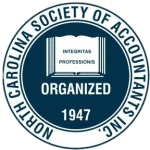
Source: Consultants News
Peterborough, NH
Consultants News, of Peterborough, NH, is probably the most prestigious consultants news letter published and features world wide distribution. Awhile back, because they receive many questions about “how to value consulting firms”? . . . . . whether they’re mid-sized firms being acquired by industrial giants, or founding partners assessing fair valuation when new partners are appointed. To deal with CN’s coverage of this topic, they asked Charlotte based consultant and valuation analyst Paul A. Halas, Jr., to outline his valuation technique as it applies to consulting firms.
Thomas D’Ufrey said: “The worth of a thing is known by its want.”? For management consultants the more contemporary question might be “how much is a consulting firm worth in real dollars.”?
Someone suggested at a past Institute of Management Consultants (IMC) conference that a consulting practice is really nothing more than a specialized business whose value is the sum of hard assets plus current real profits.
But its not that simple. And there’s no single formula to determine base valuation. My method, which I call the Halas Business Valuation System (HBVS) blends several protocols to valuing a business.
This blended approach allows the valuation to factor in more than just the income stream and owned assets (which, for smaller firms in particular, can be a substantial component of value). The key to this approach is to consider such things as goodwill, cyclical business factors and excess income as adjustments to several valuation formulas.
As a point of discussion, I used our HBVS approach, hard data only, no esoteric or subjective input, with three actual consulting firms of different sizes. Side by side comparisons of the three firms are shown in the following table:
| Table 1 | |||
| Value Comparison of Three Consulting Firms | |||
| Micro | Small-Med | Mid-Size | |
| (Niche) | (Generalist) | (Niche) | |
| Total Revenues | $195,348 | $2,682,183 | $17,462,015 |
| Full Time Employees | 5 | 17 | 108 |
| Assets Owned | $268,455 | $618,078 | $2,213,288 |
| “Real”? Net Profit | $48,533 | $776,473 | $1,970,066 |
| RNP as % of Rev’s | 24.8% | 28.9% | 11.3% |
| Value (HBVS System) | $333,000 | $3,413,000 | $8,662,000 |
| Implied P/E Ratio | 6.9 | 4.4 | 4.4 |
(1) Assets based on current market value
(2) Real profit includes owner perks and certain discretionary expenses
1. Micro-niche firm, $200K Revenues
In this case the present owner has built the business from the start, 30 plus years ago. With a current staff of five (part and full time), the owner has built an excellent reputation with several hundred clients and is now looking to retire. In fact a slow down has already begun and the owner prefers to be available for “guidance”? rather than participating in the daily grind. The owner’s perception of business value concentrates for the most part on reputation, industry experience, the solid relationships that have been established and the real property the business has gradually acquired.
For this firm our different valuation formulas generated values ranging from $220K to $477K, with a blended value of $333K. This final value represented only a slight improvement over the business asset value, due to the modest revenues and profit. In the owner’s own words “the practice would be a great base for a new owner who was interested in business development. Its revenue could be doubled with minimal effort.”?
Like many small, owner operated businesses, this firm may not have produced a valuation in keeping with the owner’s perception. This is usually due to an owner’s estimation of intellectual value to be attributed to the client list and the value of reputation and relationships. Unfortunately, as with any service business, those client relationships are only valuable to the degree that they are active and producing profitable revenue. This practice would indeed represent an excellent opportunity for the next owner, provided he/she is willing to “beat the bushes”? for new assignments.
2. Small / medium-sized generalist firm, $2.5M revenues
This firm was also established decades ago and now serves several hundred clients in a broad range of industries. With a current staff of 17, the firm’s offerings range from attitude and opinion surveys, to operational skill enhancement programs to corporate policies and culture. A true generalist consulting operation, but one which is very well managed and one in which the CEO is a practicing consultant and often on assignment.
Using the same approach, valuation ranged from $2,2M to $3.9M, with a balanced, industry-weighted value at $3.4M.In this example, the real profit is exceptionally healthy, producing excellent valuation numbers. The firm epitomizes the old investor axiom: “Is it better to buy a business that owns $700,000 in assets and produces $300,000 in profits, or a business that owns $300,000 in assets and produces $700,000 in profit?”? Unlike the first scenario, this consulting group is a shining example of what can be done with proper market planning, utilization of the client list and, of course, its people resources.
3. Mid-sized niche firm, $17.5M revenues
This is a well positioned niche firm providing consulting services to a single, large industry. Present staff number 108 and many assignments are international. The firm offers a comprehensive set of services and maintains an excellent reputation in its niche. Its CEO is also a practicing consultant and becomes directly involved with client assignments. When discussing the subject of value, he emphasizes reputation and people assets. This firm has a management style that is dedicated to client service, while providing its own people with a better-than-average quality of life.
Here, the four valuation methods produced a range of values from $6.6M to $9.8M, with the balanced, industry weighted value at $8.7M, roughly 0.5 times earnings.
Implications
This exercise highlights the down-to-earth usefulness of a non-subjective business valuation system, as a consistent and comprehensive approach to determine the market worth of consulting firms. Financial performance and assets pull no punches. In the context of this article for these three firms, their most recent performing period contributed to the final value of these example firms. After assessing thousands of firms for more than 30 years, we find the blending approach to be best, because financial valuations aren’t necessarily linked to a firm’s size. One might consider using a multiplier of 4 to 7 times earnings if you must apply a broad brush, all-encompassing method. But getting to the real income can often be difficult and frustrating. Generally, P&Ls do not offer the complete picture.
Conclusions
In many cases, management consulting firms are blessed with unique attributes, such as intellectual assets, quality client lists, and an in depth knowledge of key industries or markets. These factors are important and can be used by either the seller or buyer to possibly adjust the base valuation.
An information based system, as a baseline, centers on factual and insightful data. Subjectivity may come into play, but only after the financial inputs have produced a price level that seems fair to both a motivated seller and a willing and qualified buyer. Put more simply, its hard to get excited about market presence when the P/E ratio is in the teens. Need we say more. ***
Paul A. Halas Jr., is a valuation analyst and certified management consultant and has operated the firm of Halas & Associates since 1978. The Halas Business Valuation System (HBVS) was introduced by Halas in 1985.





